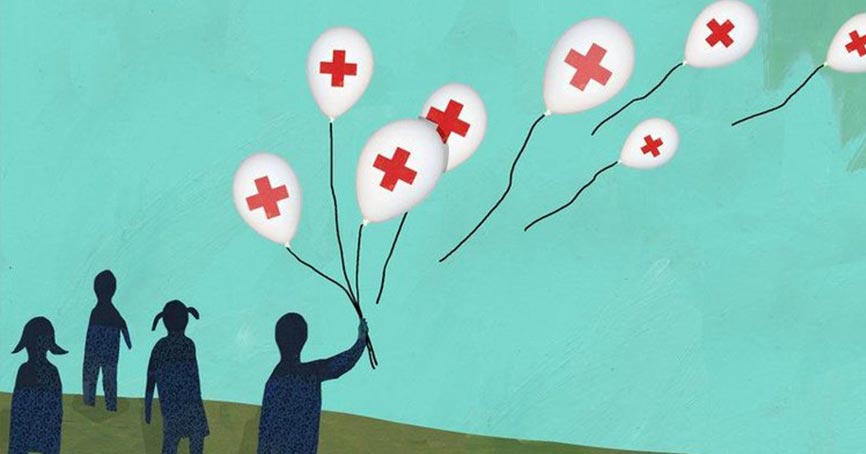Does your child snore while sleeping? Do they also face difficulty in sleeping? If yes, then, these symptoms should not be ignored. Understand why!
What Is Obstructive Sleep Apnea (OBA)?
Obstructive Sleep Apnea is a common sleep-related disorder in which a person's breathing frequently stops and starts during sleep. The airway repetitively becomes blocked, restricting the amount of air that reaches the lungs. When this happens, a person may loudly snore or gasp as they try to breathe. The brain and body lack oxygen and the person may wake up.
Most prevalent in older people, this condition affects around
7.5% of the children. As a result, it can potentially lead to various serious medical problems in the children.
Is Your Child Reflecting the Symptoms of Sleep Apnea?
One of the most common symptoms of sleep apnea is snoring. However, it is not necessary that if your child snores they have sleep apnea. Though snoring is one of the warning sign of sleep apnea when it is followed by breathing problems and choking or gasping sounds. Other symptoms of sleep apnea include:
- insomnia
- irritability
- memory loss
- difficulty concentrating
- loud or frequent snoring
- waking up with dry mouth or a sore throat
- waking during the night for toilet
- gasping or choking sounds
- fatigue or daytime sleepiness
- pauses while breathing
- incomplete sleep
- morning headaches
Combined with any of the above symptoms, frequent night-waking can be a sign of sleep apnea. As a matter of fact, children with sleep apnea have trouble breathing. As a result, they may stir often, waking up to get the air they need.
What Causes Obstructive Sleep Apnea in Children?
There are a number of factors that can lead to sleep apnea in children. For instance:
- physical obstructions - this happens when excessive fat gathers around the airway. It can further restrict the airflow, resulting in the loud snoring.
- muscular changes - when a child sleeps, the muscles keeping the air-passage open relax, along with the tongue, causing the airway to narrow. However, in the case of OBA, this relaxation may prevent the flow of air in and out of the lungs.
When the air-passage is completely blocked, the snoring stops, leading to no breathing for a 10-20 second. This pause in breathing is known as apnea. However, the child experiencing the apnea is not conscious of the problem.
What Are the Consequences of OBA, If Left Untreated?
If the symptoms of sleep apnea are left untreated, they may cause many problems. For instance, poor performance in everyday activities, chronic headaches, depression, weight gain, asthma, and other
serious conditions including:
- stroke - The disrupted oxygen flow caused by sleep apnea makes it hard for your brain to regulate the flow of blood in arteries and the brain itself.
- high blood pressure - the common nighttime awakenings lead hormonal systems to drain condition, further resulting in high blood pressure levels. Other than this, low blood-oxygen levels, caused by the recurrent cutoff of oxygen, may also add to hypertension in patients with sleep apnea.
- heart problems - patients with obstructive sleep apnea are more likely to suffer from heart failure, irregular heartbeats, and heart attacks.
- type 2 diabetes - it is found that diabetics have some sort of obstructive sleep apnea. Irregular sleep patterns or lack of sleep can also cause insulin resistance, a precursor to diabetes.
Treatment of Obstructive Sleep Apnea
If your child is diagnosed with obstructive sleep apnea, the doctor may make suggestions to help them maintain an open airway while sleeping. The recommendations may include healthy lifestyle changes or a breathing device such as a continuous positive airway pressure (CPAP) machine, implant, or mouthpiece. Depending on the type and severity of the condition, other treatments may be possible.
Tips for Preventing Sleep Apnea When Going to Bed
- Ensure the child sleeps on the side. As a matter of fact, sleeping on the back makes it more likely for the tongue and soft tissues to obstruct the airway.
- Use the tennis ball trick. To keep your kid from rolling onto their back while they sleep, sew a tennis ball into a pocket on the back of their pyjama top. You can also wedge a pillow stuffed with tennis balls behind their back.
- Keep their head up. Make sure to elevate the head of their bed by four to six inches. Other than this, you can also lift up their body from the waist by using a special body pillow or a foam wedge.
- Ensure their nasal passages are open at night by using breathing strips, nasal dilator or saline spray.
Keep their muscles tight that keep the mouth closed. For this, you can ask them to try mouth exercising. Ask them to hold a pen between their teeth for about 10 minutes before bedtime, or until the jaw starts to ache.
When to Visit a Specialist?
Consult a doctor, if your child has been facing difficulty in sleeping for more than a month. Other than this, if your child is experiencing fatigue during the day for unknown reasons, it's time to see a doctor specially trained in sleep disorders.
Most often, facing difficulty in sleeping may be confused with insomnia. To point out, it's not the same. If your child has a problem falling asleep or staying asleep, it is important to have the doctor diagnose it.
Once a formal diagnosis is done, proper follow-up with the doctor is very important. Appropriate management of the cause and proper care play a significant role in treating the condition.
Besides, the treatment results are favourable as long as they are recognized, diagnosed, and treated early.

 Jun 03, 2019
Jun 03, 2019
 May 30, 2018
May 30, 2018 May 10, 2018
May 10, 2018 May 17, 2018
May 17, 2018